SEQ

SOUTH EAST QUEENSLAND APARTMENTS REPORT
MAY 2025










SOUTH EAST QUEENSLAND APARTMENTS REPORT
MAY 2025








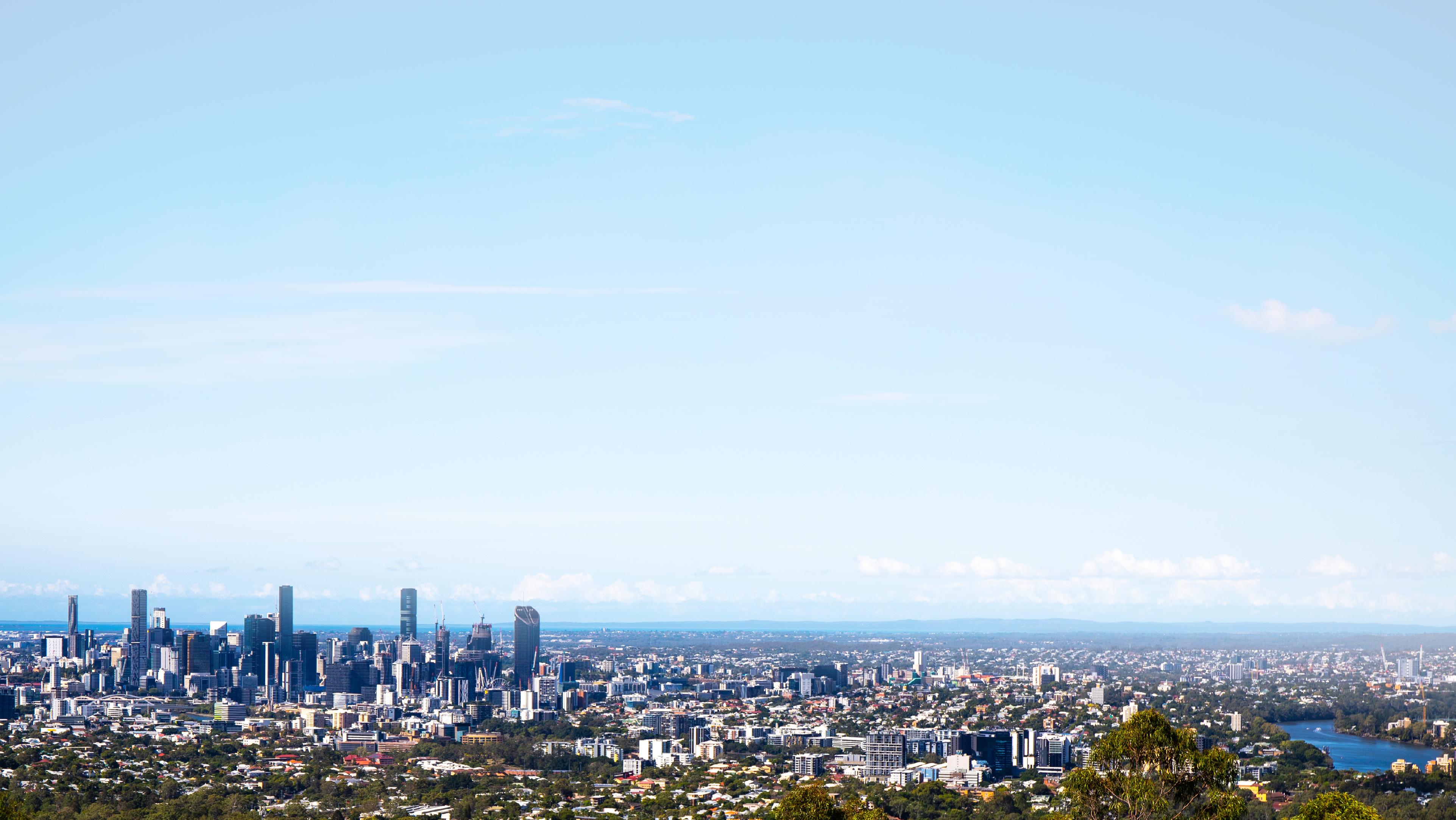
RPM is at the forefront of the property industry, setting new standards in market intelligence, expertise, and creativity. With a proven track record spanning three decades, our unsurpassed market knowledge and data-driven insights have ensured our partners achieve excellent outcomes, and our clients, exceptional returns.
Our services include:
• Project Sales & Marketing
• Research Data & Insights
• Transactions & Advisory
Highly respected, trusted development partner
$4B+
Development land transactions
Research partner of the Urban Development Institute of Victoria
100+
A multi-disciplined team of property experts
40,000+
Dwelling yield on current projects
55+
Active projects across Queensland, New South Wales and Victoria
RPM’s Research, Data & Insights division provides in-depth analysis on current local and overseas economic and property market conditions. The team consists of economists, property experts, and GIS analysts that provide real-time market intelligence, and analytical and strategic advice.
Our knowledge and expertise are an invaluable resource for RPM’s developer clients, empowering them to make intelligent, informed, and strategic decisions when evaluating residential developments and investment opportunities.
Our data and analysis help clients maximise their marketing efforts and achieve sales targets on their projects.
We collate and analyse data on Australia’s medium and high-density markets, providing insights on past and present product and pricing, as well as upcoming supply.
This comprehensive understanding of the different markets forms the foundation of our in-depth reports and bespoke analysis.
This rich data helps our team and clients to better understand:

General Manager
Research, Data & Insights
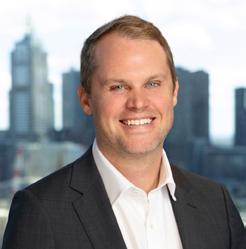
Research Manager - QLD
Research, Data & Insights

• Affluent downsizers are driving apartment demand.
• High rise build costs now exceed $6,000/sqm.
• Only well-located, premium apartments can secure buyer interest.
Brisbane, Gold Coast, and the Sunshine Coast are set to add 887,000 new residents by 2046, placing mounting pressure on housing supply – particularly apartments. While the SEQRP1 encourages higher density living (especially in Brisbane) developers face significant delivery challenges.
Despite elevated prices and construction costs, new apartment projects across SEQ continue to sell well. Much of this demand is driven by downsizers –older Australians seeking low-maintenance living, particularly in premium and/or lifestyle locations like Brisbane, Gold Coast and the Sunshine Coast. This cohort is expected to be the region’s largest growth driver through to 2046 and is reshaping the type of apartment product being delivered.
However, approvals remain sluggish, down -9% over the year to February 2025, and construction costs have surged. The average cost to build an apartment in Queensland rose 19% last year to $690,045, with high-rise costs now exceeding $6,000 per square metre. Capacity constraints across the construction sector mean the key risk has shifted from presales to project delivery.
At the same time, sale prices for new apartments continue to climb. In the Sunshine Coast, it’s $12,153/ sqm, Brisbane is $15,877/sqm, while the Gold Coast reaches $18,062/sqm.
These figures highlight the premium new products command over established stock (driven by location, design, and amenity) but also the widening affordability gap for many buyers.
Rental markets are also under strain. Over the past five years, rental listings have dropped 2%, largely due to investors selling to owner occupiers. This has pushed up rents, particularly for larger apartments. On the Sunshine Coast, rents for three-bedroom apartments rose 11% over the year.
Developers will need to balance meeting market demand and managing delivery risk. With construction costs still rising and fewer builders capable of taking on large-scale projects, only welllocated, design-led developments with a clear value proposition will cut through.
The downsizer market is ready to buy – but it’s rising quality expectations that will define success in SEQ’s next wave of apartment delivery.
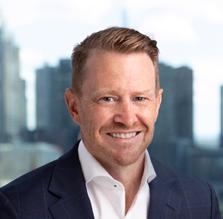
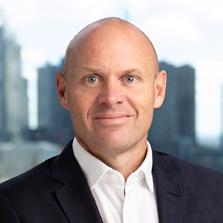
Clinton Trezise
Managing Director
Queensland & New South Wales clinton@rpmgrp.com.au
Peter Neale
Managing Director
Queensland & New South Wales petern@rpmgrp.com.au

South East Queensland’s population is set to grow by 887,000 residents (+40%) between 2021-2046, with Brisbane, Gold Coast, and Sunshine Coast absorbing much of this increase.
The most significant demographic shift will be in the 65+ age group. On the Sunshine Coast and Gold Coast, this cohort will double, while in Brisbane, it will grow by 66%.
This aging population will drive demand for housing suited to downsizers – buyers with larger budgets seeking low maintenance living. As this segment expands, developers and investors will need to align their offerings with the preferences of an increasingly affluent, older market.
This ageing, more affluent population will directly influence housing demand, driving a growing need for low-maintenance, downsizer-friendly homes.
Source: Australian Bureau of Statistics
In the year to Feb 2025, Queensland recorded 6,780 new apartment approvals – a 9% decrease from the previous year. This again fell further away from the level needed to address the state’s housing shortage.
In contrast, house and townhouse approvals rose by 14% and 17% respectively – evidence that dwellings with lower construction costs face fewer barriers to delivery.
Queensland’s construction pipeline remains near peak levels, with nearly 40,000 dwellings under construction as of December 2024. The previous high was 42,482 dwellings in 2016, driven by Brisbane’s apartment boom. At that time, houses accounted for 23% of all dwellings under construction. Today, that proportion has risen to around 35%.
With major infrastructure projects competing for labour and trades, the apartment sector faces mounting challenges in timely project delivery.
Source: Australian Bureau of Statistics
In the year to February 2025, the average construction cost per approved apartment in Queensland rose to $685,166 — a 16% increase on the previous year and a 140% jump from the peak of Brisbane’s 2016 apartment boom. While part of the increase is due to larger apartment sizes — rising from an average of 113 sqm in FY16 to 144 sqm in FY24 — the primary driver has been the significant escalation in construction costs over the period.
High-rise construction costs in Brisbane and the Gold Coast now range from $4,500 to $6,500 per sqm, pushing many developers to require saleable rates of $15,000 per sqm for projects to stack up financially. These cost pressures are reshaping the market – limiting where projects can be built, what can be delivered, and who can afford to buy them.
Brisbane recorded the strongest unit price growth among Queensland’s three key markets in the past year to March quarter 2025, with values rising 14%. One-bedroom units led the gains, up 17% to $520,000.
On the Gold Coast, unit prices increased 3% to $775,000, with one-bedroom units rising 9% to $549,000.
The Sunshine Coast saw a 7% annual rise in its median unit price to $760,000, with threebedroom units leading the growth with an 11% gain to $875,000.

Source: PriceFinder Brisbane led unit price growth in the year to March 2025, growing 14%.
Brisbane continues to contribute the lions share of activity with labour shortages holding back the coasts.
Source: PriceFinder
The price disparity between houses and units is a key driver of apartment demand. When house prices rise faster than unit prices, apartments become a more attractive option for buyers.
In Brisbane, the house-unit price gap has typically been around 52%, but after peaking in December 2021 (when house prices more than doubled unit prices) it has now widened to 82%, making apartments appear relatively undervalued.
On the Sunshine Coast, the gap has remained more stable, currently sitting at 45%, slightly above the long-term average of 39%.
The Gold Coast follows a similar trend, with the house-unit gap sitting at 49%, just above its long-term average of 44%, suggesting units still offer relative value.

Brisbane, Gold Coast, and Sunshine Coast all saw rental growth through the year to March 2025, though the pace of increases has slowed. The Sunshine Coast led the market, with three-bedroom apartments rising 7% to $730 per week.
Despite population and dwelling growth, rental bond data shows a 2% decline in apartment rental stock across the three regions over the past five years – a drop of 2,066 apartments. Brisbane saw the largest reduction, particularly in two-bedroom units, which fell by 2,515 over the five years, with a reduction of 1,344 apartments in the last 12 months. This decline was largely driven by investors selling to owner occupiers, tightening rental supply even as demand remained strong.

Apartment rental prices have increased as the rental pool has declined across SEQ over the past five years.
Source: RTA

Brisbane, Gold Coast, and Sunshine Coast remain the key hubs for apartment development in SEQ. Based on median internal sqm rates, new apartments on the Gold Coast are priced 14% higher than in Brisbane and 19% higher than on the Sunshine Coast.
The largest price jumps occur when upgrading from three to four bedrooms. In Brisbane, four-bedroom apartments are priced 16% higher than threebedroom apartments, while on the Gold Coast and Sunshine Coast, the gap widens to 33% and 32% respectively.

Source: RPM Research Data and Insights - New apartments on market
The majority of apartment stock advertised in the Gold Coast is priced above $20,000/sqm, with 39% of the total. Unsurprisingly, this is due to the high number of premium beachside projects which have been able to weather the significant construction cost increases and command premium prices. Just 4% of the new apartment stock on market in the Gold Coast is priced below $12,000/sqm these are found in the more affordable suburbs of Robina and Southport.
Brisbane Apartment developments are concentrated on the inner city along the river. Although the most common size range for stock on market in Brisbane is 75-100sqm, the majority of stock (64%) is over 100sqm.
Around one quarter of Brisbane’s new apartment stock is priced over $20,000/ sqm, this pricing is primarily seen in inner city suburbs such Kangaroo Point, West End, Bulimba and Teneriffe.
Sunshine Coast is the most affordable apartment market of the three regions with 68% of all stock on market priced under $15,000/sqm. The most common product size is 125-150sqm accounting for 48% of all stock.
$10,000,000
$9,000,000
$8,000,000
$7,000,000
$6,000,000
$5,000,000
$4,000,000
$3,000,000
$2,000,000
$1,000,000
$0
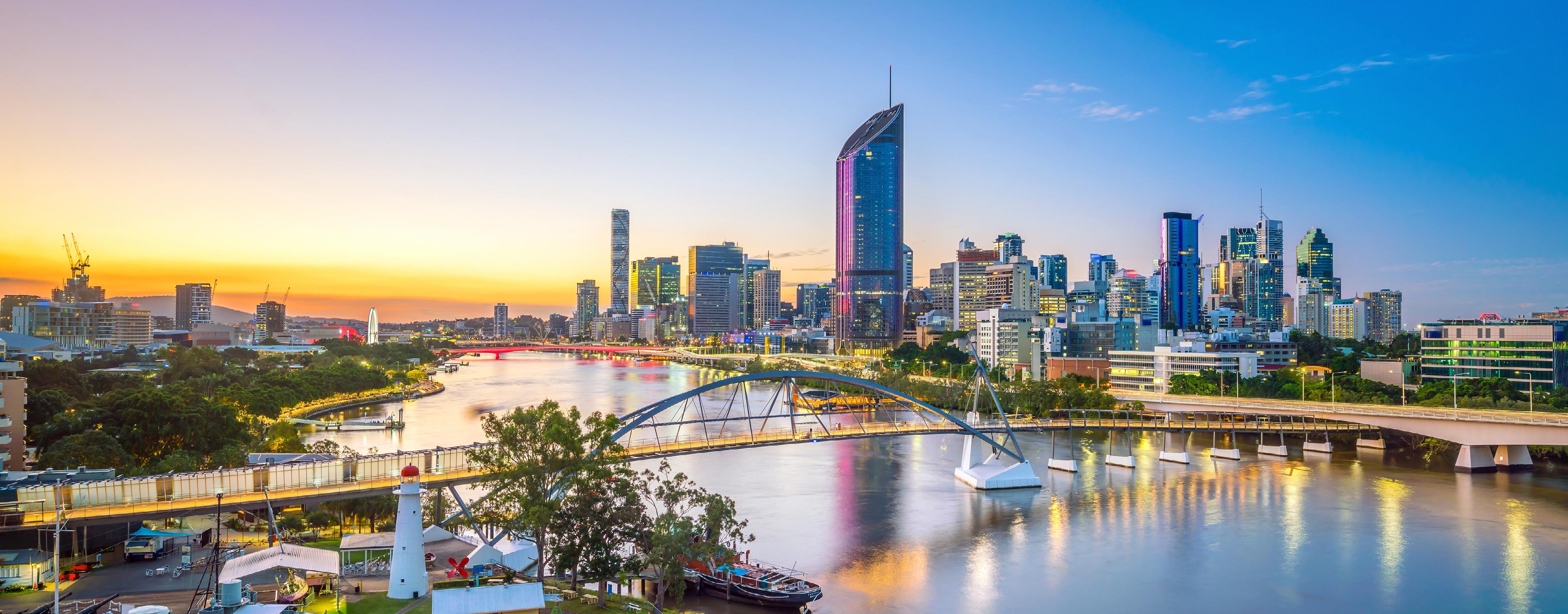
Cautious optimism is steering the SEQ apartment site market back into motion.
South East Queensland’s apartment development site market is slowly regaining momentum. The pace may not be brisk, but it is deliberate and more importantly, grounded in fundamentals.
Transaction volumes remain below long-term averages, but confidence has crept back into the market in early 2025. That confidence, however, is selective. Demand is focused on well-located, DA approved sites – particularly those suited to premium, owner occupier apartments.
The Gold Coast is currently setting the pace as it continues to lead in deal flow and listings. Brisbane, however, is experiencing higher levels of developer demand, the reality is there are just not many premium sites available. Developers are favouring innercity suburbs with views, strong transport links, and established amenities. These areas offer planning certainty and shorter delivery windows – both critical in a market shaped by cost pressures and delivery risks.
The nature of demand has also evolved. Smaller, infill opportunities are the clear frontrunners. These sites align with the preferences of downsizers and lifestylefocused buyers – people seeking low-maintenance, well-located homes without compromising on quality or convenience.
It’s no surprise that developer-builders and vertically integrated groups are leading the charge. With inhouse construction capability, these players are better equipped to manage rising delivery costs and limit exposure to external risks. Execution certainty is a major advantage in a high stakes market.
On the Gold Coast and Sunshine Coast, developer activity has pulled back slightly but remains steady – especially for sites that meet revised feasibility benchmarks. Developers here are leaning into boutique and mid-rise formats, with a sharper focus on architectural quality and differentiation. Caution is the defining theme. Acquisition strategies are
conservative, and pricing needs to reflect the reality of persistent presales headwinds and elevated levels of premium stock already in play.
Across the board, the sites attracting the most attention share a few common traits: a clear delivery pathway, low holding risk, and a track record of buyer demand.
Looking ahead, the fundamentals are still compelling. SEQ continues to be bolstered with strong population growth, low vacancy rates, and an undersupply of quality dwellings, leading to steadily increasing revenues. These conditions suggest a gradual reactivation of the apartment development pipeline through the rest of 2025.
Cautious optimism may not grab headlines – but this is what is driving this market forward.


New housing supply in SEQ is expected to remain constrained for some time. Elevated construction costs, a shortage of skilled trades, and tighter developer margins continue to weigh on delivery. Even as population growth begins to ease, the cumulative undersupply will take years to unwind.
Construction costs are still climbing from an already high base, keeping pressure on project feasibility. In Brisbane, major infrastructure projects are pulling labour away from residential construction, making it even harder for apartment developers. Developers are responding by reassessing designs; limiting basements to a single level to manage contingency costs and working more closely with subcontractors to lift productivity through stronger partnerships.
The supply imbalance is likely to persist over the next few years, even as demand builds. While affordability pressures are expected to keep price and rental growth more subdued in the short term, limited new stock will underpin medium-term growth.
In SEQ, delivering future housing is an urgent task. The SEQRP targets a tripling of medium and high-density housing between 2021 and 2046, with Brisbane and the Gold Coast expected to deliver 87% of it.
But meeting those targets won’t be easy. Labour shortages and rising construction costs are major headwinds and could further deepen the national housing crisis if not addressed.
Right now, around half of new apartment supply is being delivered through 4-8 storey buildings. Higher density projects are facing more industrial pressure, which is shifting the focus to these mid-rise formats.
On the demand side, the market remains split. High end products (especially those targeted at downsizers) continue to perform. Developers are sharpening their focus on making sure the product fits the demographic. Meanwhile, broader market apartment projects have slowed, with fewer developers actively marketing them.
There are early signs of investor interest returning, particularly in locations set to benefit from Olympicrelated infrastructure or clear housing shortages.
Delivering enough supply (particularly in Brisbane, the Gold Coast, and the Sunshine Coast LGAs) is critical. Without it, affordability will deteriorate further, and the gap between demand and available supply will keep widening.


For more information, please visit: www.rpmgrp.com.au
For a detailed market analysis or a tailored report, email the team at: contactus@rpmgrp.com.au
Project Sales & Marketing

Peter Neale
Managing Director
Queensland & New South Wales petern@rpmgrp.com.au
Research, Data & Insights

Michael Staedler
General Manager
Research, Data & Insights m.steadler@rpmgrp.com.au
Transactions & Advisory

Tim Hyland
National Strategy Manager
Transactions & Advisory tim@rpmgrp.com.au

Clinton Trezise
Managing Director
Queensland & New South Wales clinton@rpmgrp.com.au

Jasmin McDougall
Project Marketing Manager
Queensland & New South Wales jasmin@rpmgrp.com.au

Andrew Raponi
Senior Research Manager
Research, Data & Insights a.raponi@rpmgrp.com.au
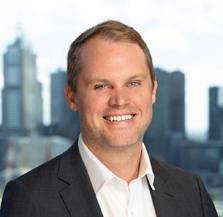
Simon Brinkman
Research Manager
Queensland & New South Wales simon@rpmgrp.com.au

Megha Saha
Research Analyst
Queensland & New South Wales megha@rpmgrp.com.au

James Matley
Sales Director Queensland
Transactions & Advisory james@rpmgrp.com.au

Phil Nguyen
Transactions Analyst
Transactions & Advisory phil@rpmgrp.com.au
View our latest reports through the QR code below, or for detailed insights or custom reporting, contact the team at: contactus@rpmgrp.com.au